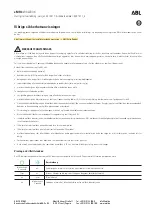
The tires that came on your vehicle
were designed and constructed to
provide superior grip during
acceleration, braking, and cornering.
As a trade-off, they will wear more
rapidly than tires used on ordinary
passenger vehicles. Because of the
vehicle’s weight distribution, and the
fact that they are the driving wheels,
you may expect the rear tires to wear
more rapidly than the front tires.
The tire mileage you can expect
from your NSX is the same as
comparable mid-and rear-engined
sports cars, and it will vary greatly
with your driving habits. If you drive
moderately, the rear tires could last
more than 10,000 miles (16,000 km).
However, the mileage will be
substantially less if you tend to drive
your NSX at the upper limits of its
capabilities. You should carefully
inspect your vehicle’s tires for wear,
damage, and proper inflation every
7,500 miles (12,000 km) (see page
).
Replace your tires with radial tires of
the same size, load range, speed
rating and maximum cold tire
pressure rating (as shown on the
tire’s side wall).
Mixing radial and bias-ply tires on
your vehicle can reduce braking
ability, traction, and steering
accuracy. Using tires of a different
size or construction can cause the
ABS to work inconsistently.
It is best to replace all four tires at
the same time. If that is not possible
or necessary, replace the two front
tires or two rear tires as a pair.
Replacing just one tire can seriously
affect your vehicle’s handling.
If you ever replace a wheel, make
sure that the wheel’s specifications
match those of the original wheels.
160
Tires
Maintenance
Tire Wear
Replacing Tires
163
















































